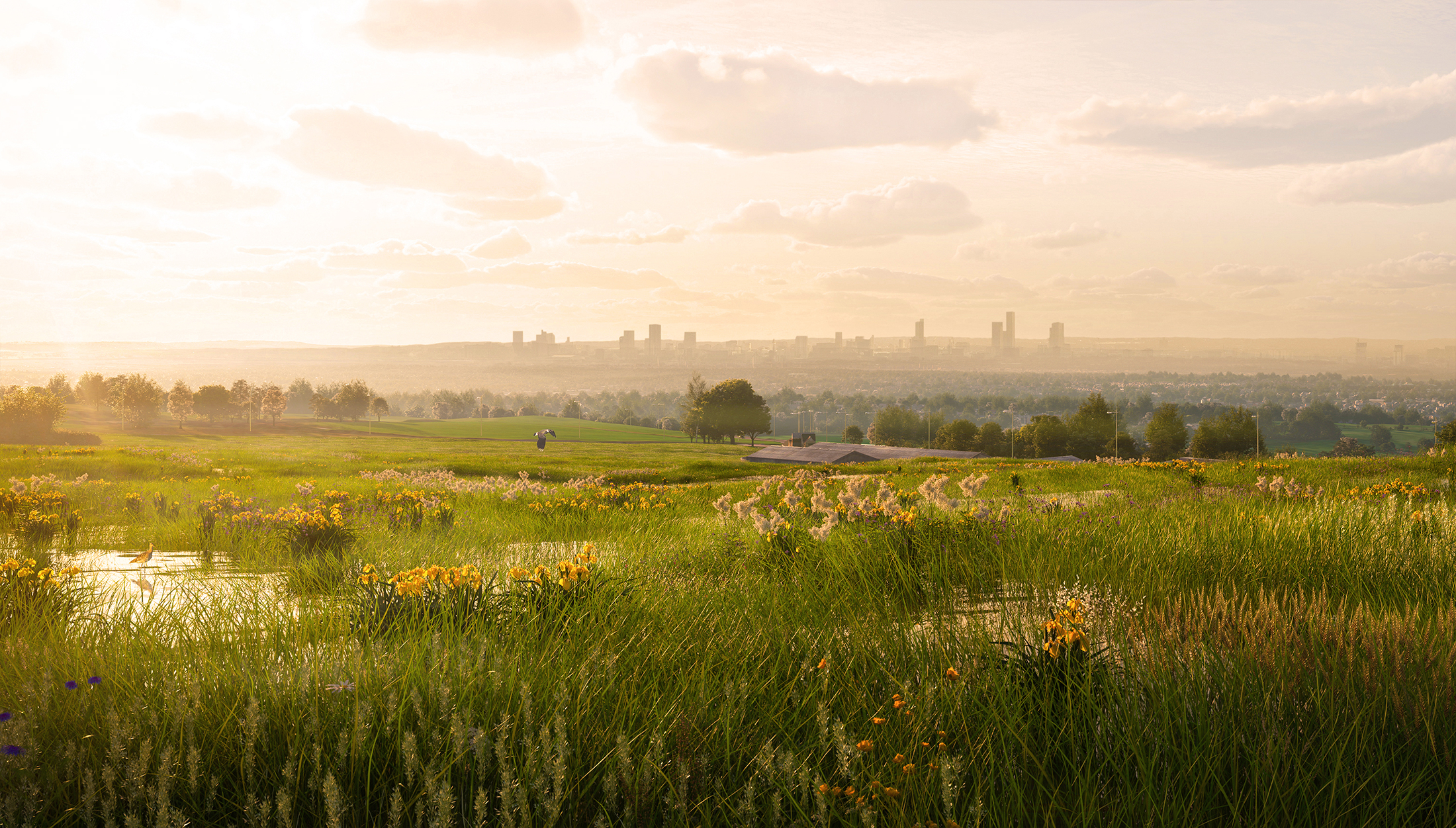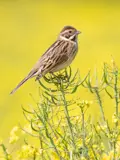BIODIVERSITY UNITS
Achieve project certainty and secure your development’s legacy
With biodiversity net gain (BNG) policy becoming a mandatory requirement on large sites from January 2024, and on small sites from April 2024, securing planning permission has become a little more complex.
BNG is designed to ensure that development projects have a net positive impact on biodiversity. But there are several things to consider to ensure your BNG delivery method secures planning permission and provides the best result for your development.
This includes:
-
The nuances of on-site and off-site BNG delivery
-
The benefits of off-site biodiversity units
-
How to create a tailored approach that maximises development benefits
-
How to find a trusted provider of biodiversity units that can support developers throughout the planning process and 30-year mandatory delivery period.
These details will be incredibly valuable for developers looking to find effective, reliable, high-quality BNG solutions that deliver the best results for nature, local people, and the legacy of their development.

The risks of on-site delivery
Defra’s mitigation hierarchy stipulates that avoiding initial biodiversity loss must be the first priority. However, development will inevitably lead to some lost biodiversity on-site. Developers must mitigate this loss (with the additional 10% net gain) and prioritise any possible mitigation on-site before considering alternatives.
On-site delivery occurs within the red line boundary of the development site, while off-site delivery occurs elsewhere. Attempting to deliver all mitigations on-site can place untenable pressure on the land available, making the project economically unfeasible. Full on-site delivery is also often unachievable – with habitat establishment typically impractical and adequate maintenance often impossible.
A Section 106 Agreement or conservation covenant will bind a site to BNG delivery for 30 years, as mandated by the Environment Act 2021. This means that any future changes to developable areas are significantly restricted by any on-site BNG delivery for three decades. Any serious disturbance to the habitat during the 30-year period could infringe planning permission – so developers must seriously consider the impact of any domestic, commercial, or industrial activity on the habitats.
Work by the Millennium Ecosystem Assessment and Natural Capital Committee has shown that placing BNG within the development usually directly disadvantages local people who lose access to spaces they’d have previously enjoyed before the development was constructed.
The benefits of off-site delivery
Exploring the options for off-site delivery can be a strategic move for developers. Off-site options can typically provide greater biodiversity uplifts, development benefits, and community gains in the long term.
Developers can purchase biodiversity units to meet their BNG obligations, and these are created through off-site habitat banks purpose-made to enhance and restore biodiversity.
By delivering BNG off-site, you can free up on-site space for people.
This can be used for recreational or aesthetic features that add value to projects, such as allotments, football pitches, flower gardens, and playgrounds – things that cannot contribute towards BNG but still enrich the space for residents.
This delivery option allows residents to enjoy on-site green spaces at their leisure, without developers worrying that dog walkers could trample any habitats or that domestic cats might hunt wildlife.

Choosing high-integrity biodiversity units for off-site mitigation
Developers must consider a robust and reliable approach to off-site mitigation, ensuring cost and delivery certainty. Choosing high-quality biodiversity units is vital for both nature and the security of your project.
A quality unit is designed with strategic significance in mind – raised from habitats of the right size, condition, and ecological importance. Habitats must be expertly-monitored to deliver the best long-term benefits for nature, using initial surveys to confirm whether the intended gains are genuinely achievable.
By working in close collaboration with local communities, landowners, LPAs, Local Nature Partnerships (LNPs), and other key stakeholders, off-site nature recovery sites can be purpose-built to achieve the specific nature recovery priorities of the local area.
Quality off-site nature restoration won’t result in isolated pockets of biodiversity as seen with on-site BNG. By connecting areas of ecological significance on a landscape-scale, like ancient woodlands and sites of special scientific interest (SSSIs), quality off-site delivery employs the core principles for creating effective ecological networks – making them bigger, better, and more joined up.
High-integrity off-site BNG delivery also revitalises ecosystem services, resulting in cleaner water, increased carbon sequestration, improved species abundance, and enhanced soil health for natural flood management.
Creating a tailored approach
Developers can explore solutions that strategically merge off-site and on-site provision for a cost-effective and environmentally-beneficial approach.
This can be a particularly shrewd option wherever an on-site area of high-distinctiveness habitat will be preserved, such as a pond, but another area of habitat, such as a meadow, will be disturbed and therefore require mitigation. Defra’s biodiversity metric makes certain high-distinctiveness habitats deliberately expensive to offset in order to deter developers removing them.
A developer seeking planning permission should engage with an expert ecologist to understand the cost implications of specific habitat removal
and the best ways to monitor and maintain any on-site habitat preservation and BNG delivery.
However, it is essential that the 10% uplift is met and any biodiversity loss is fully mitigated either on-site or off-site. This is why purchasing biodiversity units is advisable whenever habitat loss cannot be mitigated on-site. A trusted unit provider employing expert ecologists, like Environment Bank, can collaborate with you to create a tailored approach.

Finding a trusted provider of biodiversity units
Thanks to the abundant benefits they offer for developers, ecosystems, and communities – off-site biodiversity units are a prudent choice for development projects.
The key is to distinguish between the credible providers that can be trusted to design and deliver a Biodiversity Gain Plan for the full 30-year term and those that cannot. By working with a trusted provider, you’re more likely to meet stringent planning requirements.
At Environment Bank, our team of expert ecologists are setting the gold standard in habitat creation, providing access to high-integrity Biodiversity Units nationwide – with forward funding for our network of Habitat Banks already secured.
All liability for BNG delivery lies with Environment Bank, including habitat management, monitoring, and reporting throughout. We provide a comprehensive and frictionless solution for BNG delivery, creating a development strategy that’s acceptable to planning officers – offering support with baseline surveys, BNG Statements, and Biodiversity Gain Plans.
Our specialists support land and planning directors and their consultants from the beginning, offering guidance through the often high-stakes aspects of the planning process and preventing drawbacks down the line – providing a clean break that promises clarity, certainty, and security for developers.
Delivering the best results for your development and the natural landscape
Environment Bank currently has more than a hundred Habitat Banks in progress across a broad range of LPA areas, covering more than 6,500 acres of land.
Our award-winning sites are already raising high-integrity Biodiversity Units, securing planning permission for developers nationwide.
We have ironclad legal frameworks in place to ensure all liability for BNG delivery sits with us and we are confident in our ability to deliver the required biodiversity uplifts – ensuring development schemes remain compliant for the legally mandated term.
Our Habitat Banks are funded for their lifetime through sustainable investment, securing effective delivery for the full term. We cover lease
and management payments, capital works, legal costs, administration fees, inflation, and contingency planning. This gives developers the confidence that all obligations will be met under all circumstances.
We support developers to ensure our BNG solution maximises gains for nature while delivering all the benefits to secure their project’s legacy.

